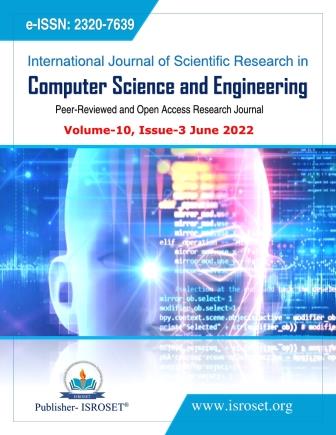Theoretical Study of the Biological Role of Hypericin in DYRK2 Protein
Keywords:
DYRK2, Hypericin, cancer, Docking analysisAbstract
For the first time, this communication is intended to investigate the possible biological role of the natural compound Hypericin in the Crystal Structure of dual-specificity tyrosine phosphorylation regulated kinase 2 (DYRK2), by Molecular and Dynamic Simulation. From Docking analysis by Autodock Vina and Autodock 4, Hypericin shows a significant ability to bind to DYRK2 protein, an important receptor for cell growth and development. Indeed, from our docking studies, this substance reports an excellent Binding Energy value of about -13.00 kcal/mol with Inhibition Constant value (Ki) of 1 nMolar. Although our results are encouraging there remain many open questions and in Vitro and in Vivo studies to confirm our findings.
References
Nomura, S., Suzuki, Y., Takahashi, R., Terasaki, M., Kimata, R., Terasaki, Y., and Kondo, Y. “Dual-specificity tyrosine phosphorylation-regulated kinase 2 (DYRK2) as a novel marker in T1 high-grade and T2 bladder cancer patients receiving neoadjuvant chemotherapy”. BMC urology Vol., 15, pp.1-6, 2015.
Woods, Y. L., Cohen, P., Becker, W., Jakes, R., Goedert, M., Wang, X., Proud, C. G. The kinase DYRK phosphorylates protein-synthesis initiation factor eIF2B? at Ser539 and the microtubule-associated protein tau at Thr212: potential role for DYRK as a glycogen synthase kinase 3-priming kinase. Biochemical Journal Vol. 355, pp.609-615, 2001.
Taira, N., Nihira, K., Yamaguchi, T., Miki, Y., Yoshida, K. DYRK2 is targeted to the nucleus and controls p53 via Ser46 phosphorylation in the apoptotic response to DNA damage. Molecular cell Vol.25, pp.725-738, 2007.
Tandon, V., de la Vega, L.,Banerjee, S. “Emerging roles of DYRK2 in cancer”. Journal of Biological Chemistry Vol.296 pp.100233, 2021.
Correa-Sáez, A., Jiménez-Izquierdo, R., Garrido-Rodríguez, M., Morrugares, R., Muñoz, E., Calzado, M. A. “ Updating dual-specificity tyrosine-phosphorylation-regulated kinase 2 (DYRK2): molecular basis, functions and role in diseases”. Cellular and Molecular Life Sciences Vol.77, pp.4747-4763, 2020.
Yoshida, K. “Role for DYRK family kinases on regulation of apoptosis”. Biochemical pharmacology Vol.76, pp.1389-1394, 2008.
Kubin, A., Wierrani, F., Burner, U., Alth, G., and Grunberger, W. (2005). Hypericin-the facts about a controversial agent. Current pharmaceutical design, Vol.11,Issue (2), pp.233-253.
Palumbo, G. “Photodynamic therapy and cancer: a brief sightseeing tour”. Expert opinion on drug delivery, Vol.4, Issue.(2), 131-148, 2007.
Erdelmeier, C. A. J., Koch, E., and Hoerr, R. . “Hypericum perforatum-St. John`s Wort chemical, pharmacological and clinical aspects”. In Studies in natural products chemistry Vol. 22, pp. 643-716, 2000.
Pettersen, E. F., Goddard, T. D., Huang, C. C., Couch, G. S., Greenblatt, D. M., Meng, E. C., Ferrin, T. E. (“ UCSF Chimera—a visualization system for exploratory research and analysis”. Journal of computational chemistry Vol. 25, pp.1605-1612, 2004.
Trott, O., and Olson, A. J. “AutoDock Vina: improving the speed and accuracy of docking with a new scoring function, efficient optimization, and multithreading”. Journal of computational chemistry Vol.31 pp.455-461, 1010.
Huey, R., Morris, G. M., Forli, S. “Using AutoDock 4 and AutoDock vina with AutoDockTools: a tutorial. The Scripps Research Institute” Molecular Graphics Laboratory Vol.10550, pp.92037, 2012.
Pires, D. E., Blundell, T. L., Ascher, D. B.”pkCSM: predicting small-molecule pharmacokinetic and toxicity properties using graph-based signatures”. Journal of medicinal chemistry Vol.58 pp.4066-4072, 2015.
Sunseri, J., and Koes, D. R. “Pharmit: interactive exploration of chemical space”. Nucleic acids research Vol.44,pp.W442-W448, 2016.
Lagunin, A., Stepanchikova, A., Filimonov, D., Poroikov, V.” PASS: prediction of activity spectra for biologically active substances”. Bioinformatics Vol,16, pp.747-748, 2000.
Daina, A., Michielin, O., Zoete, V. “SwissTargetPrediction: updated data and new features for efficient prediction of protein targets of small molecules”. Nucleic acids research Vol.47, pp. W357-W364,2019.
López-Blanco, J. R., Aliaga, J. I., Quintana-Ortí, E. S., Chacón, P. “iMODS: internal coordinates normal mode analysis server”. Nucleic acids research Vol.42, pp.W271-W276, 2014.
Downloads
Published
How to Cite
Issue
Section
License

This work is licensed under a Creative Commons Attribution 4.0 International License.
Authors contributing to this journal agree to publish their articles under the Creative Commons Attribution 4.0 International License, allowing third parties to share their work (copy, distribute, transmit) and to adapt it, under the condition that the authors are given credit and that in the event of reuse or distribution, the terms of this license are made clear.







